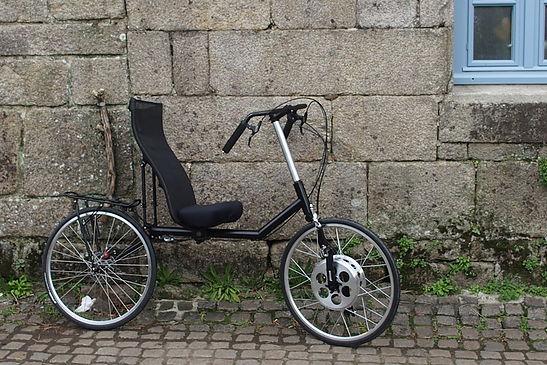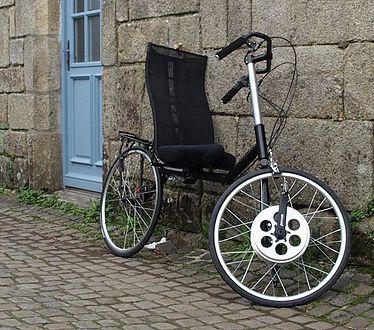- News
- Reviews
- Bikes
- Accessories
- Accessories - misc
- Computer mounts
- Bags
- Bar ends
- Bike bags & cases
- Bottle cages
- Bottles
- Cameras
- Car racks
- Child seats
- Computers
- Glasses
- GPS units
- Helmets
- Lights - front
- Lights - rear
- Lights - sets
- Locks
- Mirrors
- Mudguards
- Racks
- Pumps & CO2 inflators
- Puncture kits
- Reflectives
- Smart watches
- Stands and racks
- Trailers
- Clothing
- Components
- Bar tape & grips
- Bottom brackets
- Brake & gear cables
- Brake & STI levers
- Brake pads & spares
- Brakes
- Cassettes & freewheels
- Chains
- Chainsets & chainrings
- Derailleurs - front
- Derailleurs - rear
- Forks
- Gear levers & shifters
- Groupsets
- Handlebars & extensions
- Headsets
- Hubs
- Inner tubes
- Pedals
- Quick releases & skewers
- Saddles
- Seatposts
- Stems
- Wheels
- Tyres
- Health, fitness and nutrition
- Tools and workshop
- Miscellaneous
- Cross country mountain bikes
- Tubeless valves
- Buyers Guides
- Features
- Forum
- Recommends
- Podcast
TECH NEWS
 kervelo 4.jpg
kervelo 4.jpgHave you seen KerVelo’s front-wheel-drive recumbent?
What madness is this? The KerVelo is a recumbent bicycle, that much is fairly normal, but this one uses a Pinion gearbox located in the front wheel, making it a front-wheel-drive bicycle, and that’s a bit more unusual.
Powering the front wheel of a bicycle isn’t complete madness though. Early bicycles involved powering the front wheel, like the penny farthing for example. But the invention of the safety bicycle and the evolution of the geared transmission means that most bicycles today, including recumbents, power the rear wheel.
It’s not the first front-wheel-drive recumbent that has been invented either. A quick Google search revealed the FrontRunner, another front-wheel-drive recumbent. Though comparing the two, the KerVelo does appear the smarter design, courtesy of the gear hub keeping the drivetrain components packaged away inside the front hub.
With his design, Marc has attempted to design a recumbent which he claims provides the optimal frame geometry and rider position, based on an ergonomic study he conducted. To help achieve this design, he’s sought to step away from a traditional drivetrain, and position the drive unit in the front wheels.
“The KerVelo concept has tried to challenge both bicycle and recumbent geometry by providing a semi-bent position,” says the inventor, Norway-based Marc Le Borgne. "It accumulates the advantages of comfort, visibility, safety, aerodynamic, mechanical efficiency and low maintenance.”
And that explains the reason for making it a front-wheel-drive bicycle. To achieve this, a German designed and manufactured Pinion gearbox, featured in some mountain bikes and e-bikes, is housed in the front wheel, with a set of crank arms and pedals directly attached. It provides an 18-speed setup, with a handlebar mounted gear lever.
This bike has no saddle. Instead, there is a rather conventional seat. The position can be adjusted to fit different riders and leg length, using a sliding post mechanism.
Currently the design is still a prototype. Now this is normally where a Kickstarter campaign comes in, but not here. Instead, KerVelo is seeking feedback, so if you’re interested, feel free to drop them a line on their contact page. They’re working on a trike version too.
Watching the videos above, the KerVelo certainly appears to work. There appear to be few issues with the pedals being attached to the front wheel, and turning and going around corners doesn’t seem to result in banging legs on the tyre.
We think Canadian bike brand Cervelo might have something to say about the brand name though it’s unlikely the two would ever be confused with one another unless Cervelo decides to make a recumbent, but we can’t see that really happening.
More at www.kervelo-bike.com
David worked on the road.cc tech team from 2012-2020. Previously he was editor of Bikemagic.com and before that staff writer at RCUK. He's a seasoned cyclist of all disciplines, from road to mountain biking, touring to cyclo-cross, he only wishes he had time to ride them all. He's mildly competitive, though he'll never admit it, and is a frequent road racer but is too lazy to do really well. He currently resides in the Cotswolds, and you can now find him over on his own YouTube channel David Arthur - Just Ride Bikes.
Latest Comments
- quiff 16 sec ago
Agree. I might have some sympathy with using the bus lane rather than the crossing (though you're right, they shouldn't be using it). Signage could...
- ROOTminus1 1 hour 57 min ago
Front page of the local rag, earlier in the week. How careless of the driver to let their car do that.
- chrisonabike 1 hour 56 min ago
Hmm... sounds like the usual "over-reaction due to previous under-reaction". (Think Waverley station here has also banned these?)...
- David9694 2 hours 12 min ago
"Just a flesh wound" was expecting to be the. 94th person to post...
- Global Nomad 2 hours 26 min ago
Is the end a regular circle? I.e would establishing the size of any circular object on a new chainring give you the same info on a worn one? Seems so.
- Paul J 2 hours 37 min ago
I have the CatEye mounted on the seat stay. The CatEye angled mount means the light ends up pointing in right direction.
- Johnny Rags 3 hours 31 min ago
I'm on our local council and am always more than happy to argue in favour of pedestrianisation (which we're looking into) or charging for car...
- headingley 3 hours 31 min ago
Most Class "C" Drugs are, in fact, prescription drugs.....possession of them without a prescription (NHS or Private) is an offence - the offence is...


Add new comment
9 comments
I suppose I should mention the Burrows Ratracer here, which is a FWD recumbent that does not require the rider to turn their feet/pedals with the steering.
Interesting lateral thinking, but very much an urban design. The upright seat is good for visibility but likely to give 'recumbutt' over a longer ride, as well as drag on open road. Pig ugly, but in a nicely functional kind of way.
Cruzbike & Flevo require specific learning to ride, but not so the more 'conventional' Kervelo/Raptobike style whereby there's no foot influence on steering.
Or Flevobike, though not direct drive like the KerVelo
I'd like to see some tests of these out of interest ;if road.cc can get one of happily write up a test on a Cruz bike.
Or Cruzbike.
See also Raptobike for a conventional FWD recumbent
looks like Stewie Griffin's big wheel.
Seems a bit tall to me, surely you'd want your backside down close to ground level between the wheels, for both CoG and aero reasons?
I agree. There doesn't seem to be much aero advantage to this design compared with a normal bike. The problem must be with the legs. They have to be 'above' the wheel. If they approached the wheel from the side you couldn't steer without catching on the wheel.